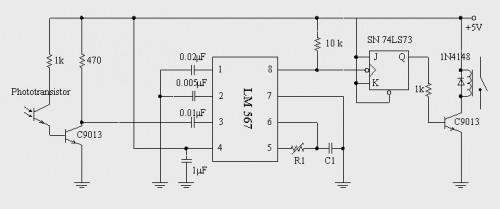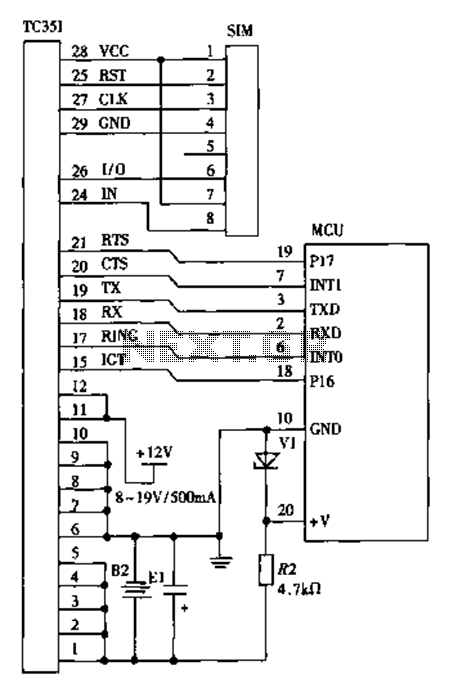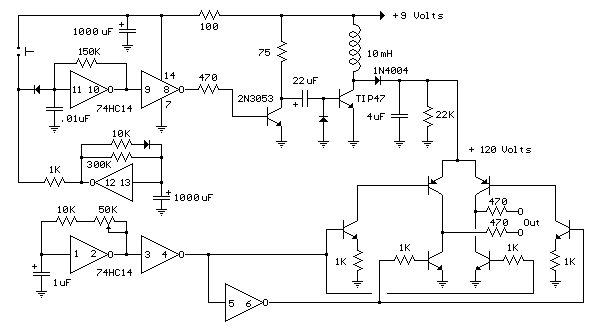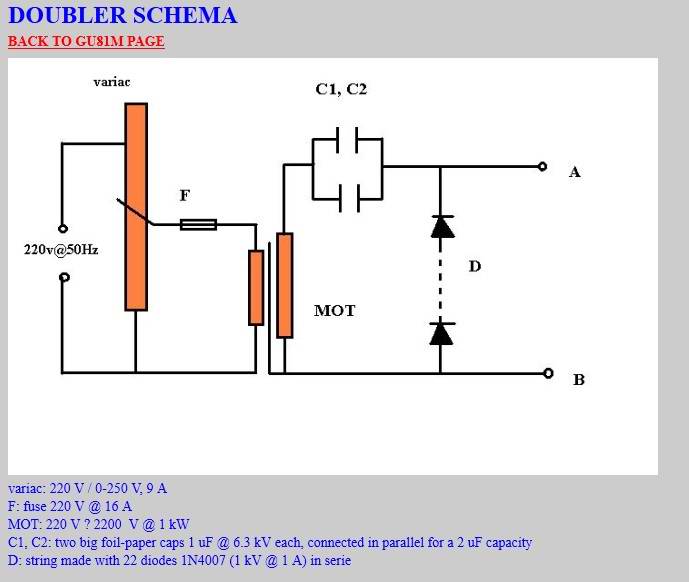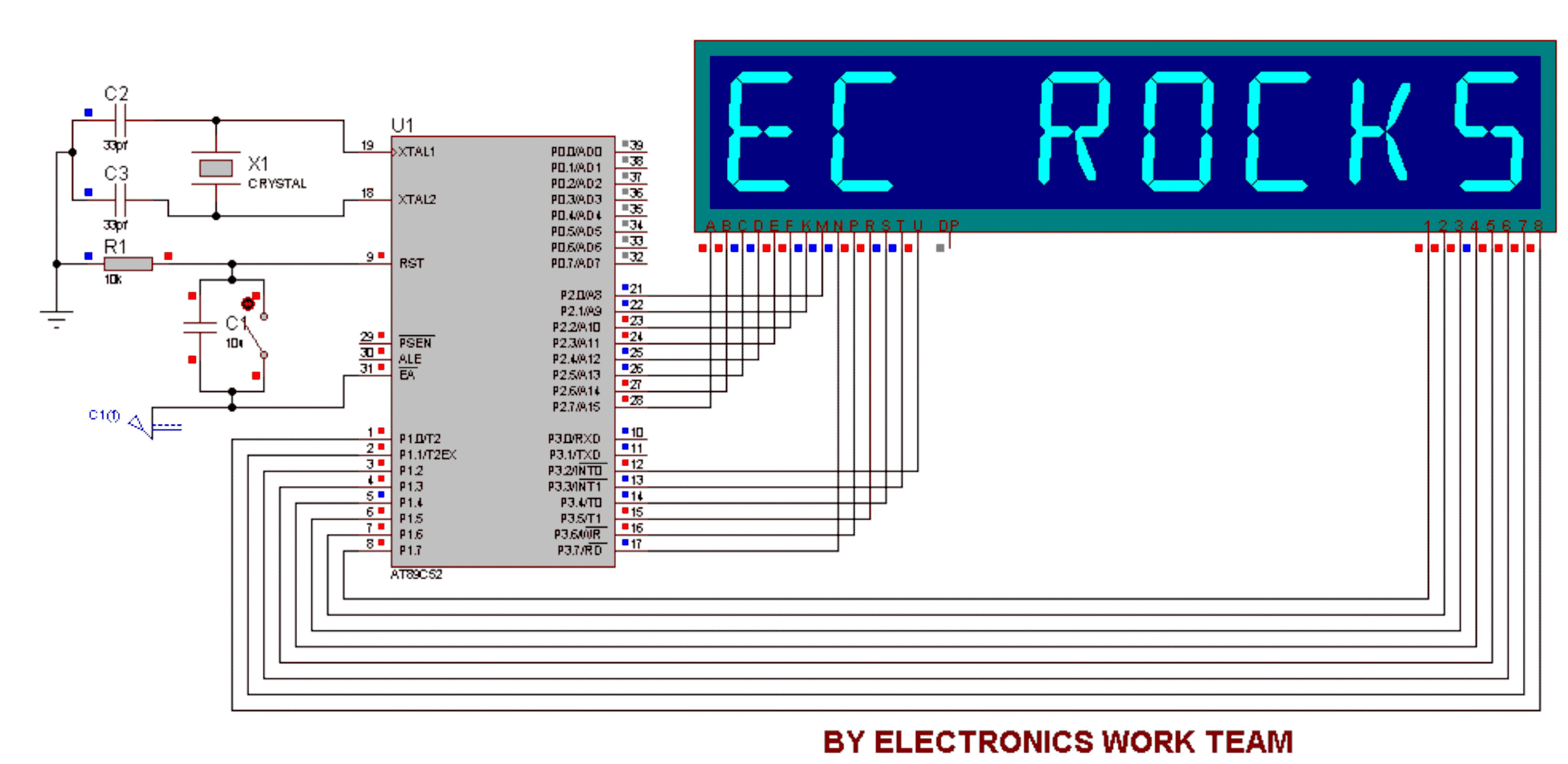
Vehicle Tracking System using GPS and GSM modem
In this project, an embedded system is designed for tracking and positioning vehicles using the Global Positioning System (GPS) and Global System for Mobile Communications (GSM). The AT89S52 microcontroller interfaces with various hardware peripherals. The system continuously monitors a moving vehicle and reports its status on demand. The AT89S52 microcontroller is connected serially to a GSM modem and a GPS receiver. The GSM modem transmits the vehicle's position (latitude and longitude) from a remote location. The GPS modem continuously provides data, specifically the latitude and longitude that indicate the vehicle's position. Although the GPS modem outputs several parameters, only the NMEA data is read and displayed on an LCD. This data is also sent to a mobile device upon request. An EEPROM is utilized to store the mobile number. The hardware interfaces connected to the microcontroller include an LCD display, GSM modem, and GPS receiver. The design employs the RS-232 protocol for serial communication between the modems and the microcontroller, with a serial driver IC converting TTL voltage levels to RS-232 voltage levels. When a user requests the vehicle's position via the modem, the system automatically replies with the vehicle's latitude and longitude. This project enables vehicle positioning and navigation globally using the 8052 microcontroller, GPS receiver, GSM modem, MAX 232, and EEPROM. The microcontroller AT89S52 executes code stored in its internal ROM. It processes instructions to facilitate communication between the GSM and GPS modules via serial communication. The GPS receiver continuously transmits data, while the GSM modem both transmits and receives data. The microcontroller first retrieves data from the GPS receiver and then sends the information to the owner as an SMS using the GSM modem. The GPS receiver operates at a baud rate of 9600 to receive data from satellites, which is then processed by the AT89S52 microcontroller and forwarded to the GSM modem. During processing, the GPS receiver only utilizes $GPRMC values, extracting latitude and longitude while excluding other information such as time, altitude, satellite names, and authentication. For example, the output might indicate LAT: 1728:2470 and LOG: 7843.3089. The GSM modem operates at a baud rate of 57600 and functions as both an SMS sender and receiver. The EEPROM, which is an Electrically Erasable Read-Only Memory, is used to store the mobile number. Power is supplied to the GSM, GPS, and microcontroller circuitry using a 12V/3.2A battery. The GSM requires 12V, while the GPS and microcontroller operate at 5V, with regulators used to manage power distribution among the components.
The vehicle tracking system described integrates several key components to achieve real-time vehicle monitoring and location reporting. The AT89S52 microcontroller serves as the central processing unit, managing data flow between the GPS and GSM modules. The GPS receiver continuously gathers location data from satellites, providing real-time latitude and longitude. This data is formatted according to the NMEA protocol, which is a standard used by GPS devices to communicate location information.
The GSM modem plays a crucial role in transmitting the location data to the user. When a request is made from a mobile phone, the GSM modem receives the SMS and triggers the microcontroller to initiate a response. The microcontroller processes the incoming data from the GPS receiver, extracting the necessary latitude and longitude values, and formats this information into an SMS that is sent back to the requesting mobile device.
The LCD display provides a user interface for monitoring the system's status and can be used for debugging during development. The use of an EEPROM allows for the storage of the mobile number, ensuring that the system can send location updates to the correct recipient without requiring manual input each time.
Power management is critical in embedded systems, especially in mobile applications like this vehicle tracking system. The choice of power supply components, including voltage regulators, ensures that each module receives the appropriate voltage levels required for optimal operation. The system's design must also consider factors such as power consumption and battery life, particularly since it is intended for use in vehicles that may be in operation for extended periods.
Overall, this vehicle tracking system exemplifies the integration of microcontroller technology with GPS and GSM communications to provide a practical solution for real-time vehicle monitoring and location reporting. The design can be further enhanced by incorporating additional features such as geofencing, alerts for unauthorized vehicle movement, and integration with mobile applications for a more user-friendly experience.You are here: Btechzone | Job Updates | JNTU Updates » Basics, Electronics, Projects » ECE Mini & Major Project on Vehicle Tracking System using GPS and GSM modem Warning: Missing argument 2 for wpdb::prepare(), called in /home3/nithish/public_html/btechzone. com/wp-content/plugins/sharebar/sharebar. php on line 112 and defined in /home3/nithish /public_html/btechzone. com/wp-includes/wp-db. php on line 992 Warning: Missing argument 2 for wpdb::prepare(), called in /home3/nithish/public_html/btechzone. com/wp-content/plugins/sharebar/sharebar. php on line 124 and defined in /home3/nithish/public_html/btechzone. com/wp-includes/wp-db. php on line 992 In this Project it is proposed to design an embedded system which is used for tracking and positioning of any vehicle by using Global Positioning System (GPS) and Global system for mobile communication (GSM).
In this project AT89S52 microcontroller is used for interfacing to various hardware peripherals. The current design is an embedded application, which will continuously monitor a moving Vehicle and report the status of the Vehicle on demand. For doing so an AT89S52 microcontroller is interfaced serially to a GSM Modem and GPS Receiver. A GSM modem is used to send the position (Latitude and Longitude) of the vehicle from a remote place.
The GPS modem will continuously give the data i. e. the latitude and longitude indicating the position of the vehicle. The GPS modem gives many parameters as the output, but only the NMEA data coming out is read and displayed on to the LCD. The same data is sent to the mobile at the other end from where the position of the vehicle is demanded.
An EEPROM is used to store the mobile number. The hardware interfaces to microcontroller are LCD display, GSM modem and GPS Receiver. The design uses RS-232 protocol for serial communication between the modems and the microcontroller. A serial driver IC is used for converting TTL voltage levels to RS-232 voltage levels. When the request by user is sent to the number at the modem, the system automatically sends a return reply to that mobile indicating the position of the vehicle in terms of latitude and longitude. The project is vehicle positioning and navigation system we can locate the vehicle around the globe with 8052 micro controller, GPS receiver, GSM modem, MAX 232, EEPROM.
Microcontroller used is AT89S52. The code is written in the internal memory of Microcontroller i. e. ROM. With help of instruction set it processes the instructions and it acts as interface between GSM and GPS with help of serial communication of 8052. GPS always transmits the data and GSM transmits and receive the data. Microcontroller communicates with the help of serial communication. First it takes the data from the GPS receiver and then sends the information to the owner in the form of SMS with help of GSM modem.
GPS receiver works on 9600 baud rate is used to receive the data from space Segment (from Satellites), the GPS values of different Satellites are sent to microcontroller AT89S52, where these are processed and forwarded to GSM. At the time of processing GPS receives only $GPRMC values only. From these values microcontroller takes only latitude and longitude values excluding time, altitude, name of the satellite, authentication etc.
E. g. LAT: 1728:2470 LOG: 7843. 3089 GSM modem with a baud rate 57600. GSM is a Global system for mobile communication in this project it acts as a SMS Receiver and SMS sender. EEPROM is an Electrically Erasable read only memory which stores is used to store the mobile number. The power is supplied to components like GSM, GPS and Micro control circuitry using a 12V/3. 2A battery. GSM requires 12v, GPS and microcontroller requires 5v. with the help of regulators we regulate the power between three components. 🔗 External reference
The vehicle tracking system described integrates several key components to achieve real-time vehicle monitoring and location reporting. The AT89S52 microcontroller serves as the central processing unit, managing data flow between the GPS and GSM modules. The GPS receiver continuously gathers location data from satellites, providing real-time latitude and longitude. This data is formatted according to the NMEA protocol, which is a standard used by GPS devices to communicate location information.
The GSM modem plays a crucial role in transmitting the location data to the user. When a request is made from a mobile phone, the GSM modem receives the SMS and triggers the microcontroller to initiate a response. The microcontroller processes the incoming data from the GPS receiver, extracting the necessary latitude and longitude values, and formats this information into an SMS that is sent back to the requesting mobile device.
The LCD display provides a user interface for monitoring the system's status and can be used for debugging during development. The use of an EEPROM allows for the storage of the mobile number, ensuring that the system can send location updates to the correct recipient without requiring manual input each time.
Power management is critical in embedded systems, especially in mobile applications like this vehicle tracking system. The choice of power supply components, including voltage regulators, ensures that each module receives the appropriate voltage levels required for optimal operation. The system's design must also consider factors such as power consumption and battery life, particularly since it is intended for use in vehicles that may be in operation for extended periods.
Overall, this vehicle tracking system exemplifies the integration of microcontroller technology with GPS and GSM communications to provide a practical solution for real-time vehicle monitoring and location reporting. The design can be further enhanced by incorporating additional features such as geofencing, alerts for unauthorized vehicle movement, and integration with mobile applications for a more user-friendly experience.You are here: Btechzone | Job Updates | JNTU Updates » Basics, Electronics, Projects » ECE Mini & Major Project on Vehicle Tracking System using GPS and GSM modem Warning: Missing argument 2 for wpdb::prepare(), called in /home3/nithish/public_html/btechzone. com/wp-content/plugins/sharebar/sharebar. php on line 112 and defined in /home3/nithish /public_html/btechzone. com/wp-includes/wp-db. php on line 992 Warning: Missing argument 2 for wpdb::prepare(), called in /home3/nithish/public_html/btechzone. com/wp-content/plugins/sharebar/sharebar. php on line 124 and defined in /home3/nithish/public_html/btechzone. com/wp-includes/wp-db. php on line 992 In this Project it is proposed to design an embedded system which is used for tracking and positioning of any vehicle by using Global Positioning System (GPS) and Global system for mobile communication (GSM).
In this project AT89S52 microcontroller is used for interfacing to various hardware peripherals. The current design is an embedded application, which will continuously monitor a moving Vehicle and report the status of the Vehicle on demand. For doing so an AT89S52 microcontroller is interfaced serially to a GSM Modem and GPS Receiver. A GSM modem is used to send the position (Latitude and Longitude) of the vehicle from a remote place.
The GPS modem will continuously give the data i. e. the latitude and longitude indicating the position of the vehicle. The GPS modem gives many parameters as the output, but only the NMEA data coming out is read and displayed on to the LCD. The same data is sent to the mobile at the other end from where the position of the vehicle is demanded.
An EEPROM is used to store the mobile number. The hardware interfaces to microcontroller are LCD display, GSM modem and GPS Receiver. The design uses RS-232 protocol for serial communication between the modems and the microcontroller. A serial driver IC is used for converting TTL voltage levels to RS-232 voltage levels. When the request by user is sent to the number at the modem, the system automatically sends a return reply to that mobile indicating the position of the vehicle in terms of latitude and longitude. The project is vehicle positioning and navigation system we can locate the vehicle around the globe with 8052 micro controller, GPS receiver, GSM modem, MAX 232, EEPROM.
Microcontroller used is AT89S52. The code is written in the internal memory of Microcontroller i. e. ROM. With help of instruction set it processes the instructions and it acts as interface between GSM and GPS with help of serial communication of 8052. GPS always transmits the data and GSM transmits and receive the data. Microcontroller communicates with the help of serial communication. First it takes the data from the GPS receiver and then sends the information to the owner in the form of SMS with help of GSM modem.
GPS receiver works on 9600 baud rate is used to receive the data from space Segment (from Satellites), the GPS values of different Satellites are sent to microcontroller AT89S52, where these are processed and forwarded to GSM. At the time of processing GPS receives only $GPRMC values only. From these values microcontroller takes only latitude and longitude values excluding time, altitude, name of the satellite, authentication etc.
E. g. LAT: 1728:2470 LOG: 7843. 3089 GSM modem with a baud rate 57600. GSM is a Global system for mobile communication in this project it acts as a SMS Receiver and SMS sender. EEPROM is an Electrically Erasable read only memory which stores is used to store the mobile number. The power is supplied to components like GSM, GPS and Micro control circuitry using a 12V/3. 2A battery. GSM requires 12v, GPS and microcontroller requires 5v. with the help of regulators we regulate the power between three components. 🔗 External reference

